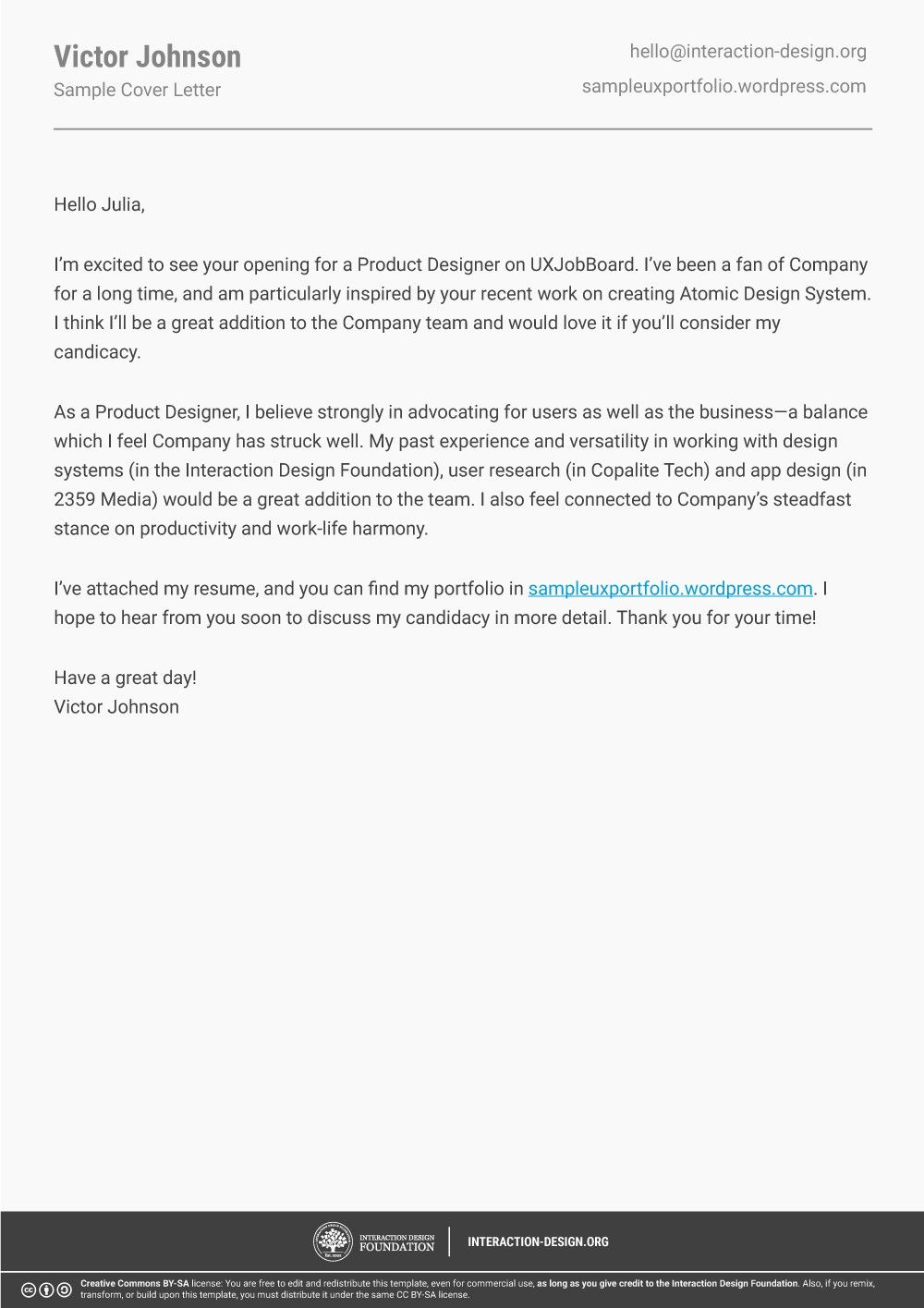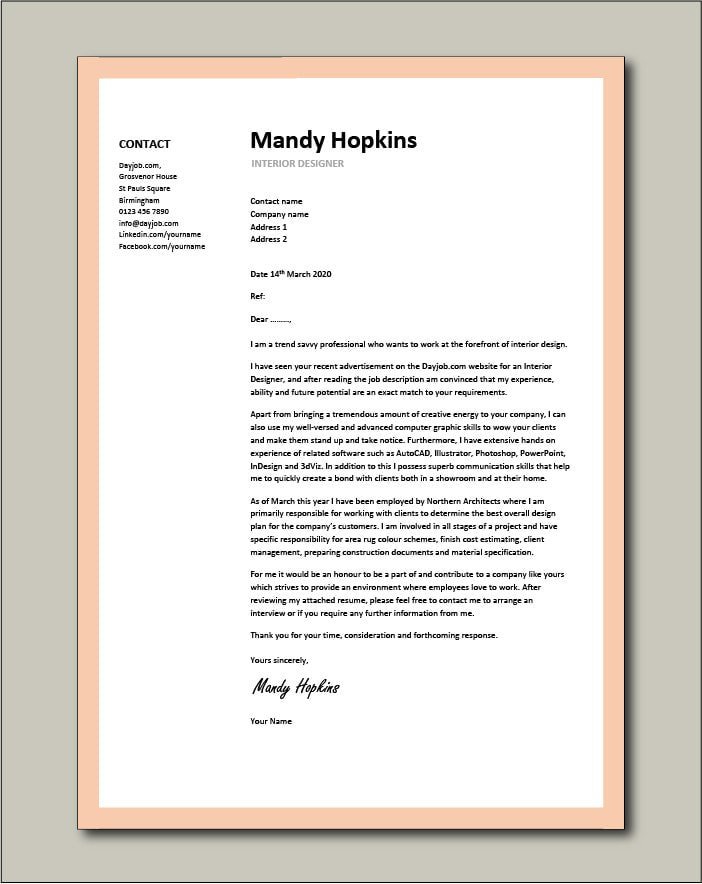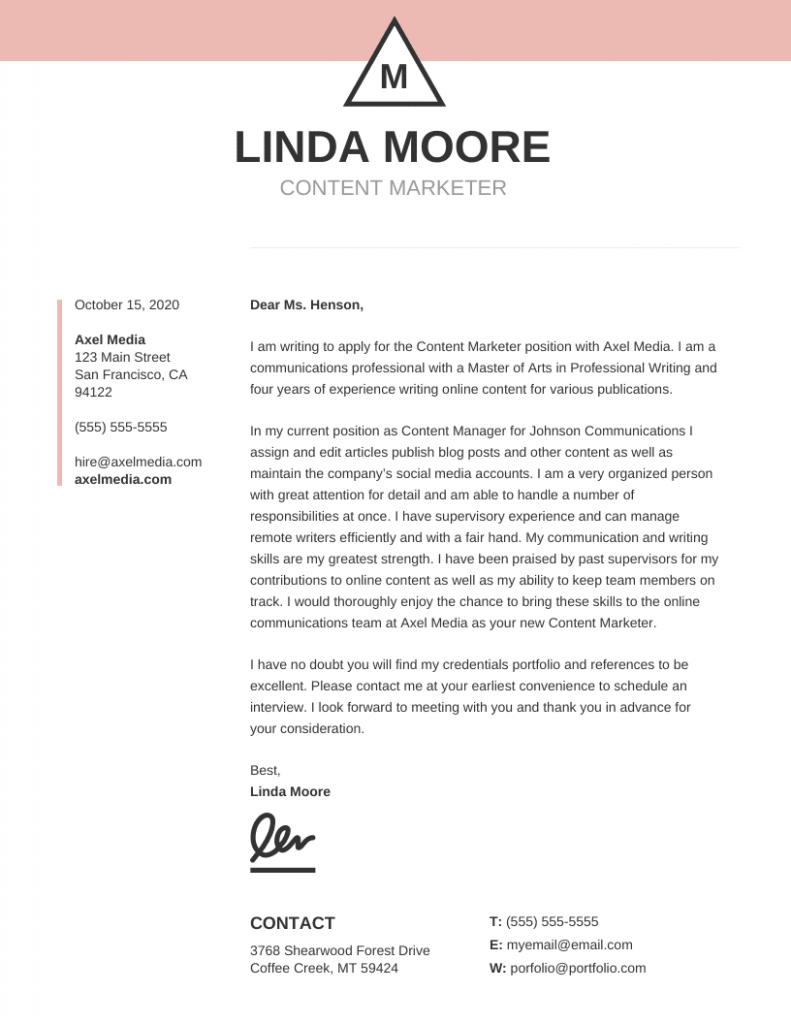I found this article on the Interaction design foundation that was very helpful when researching what would work best for making a good impression for future employers. Click here to read the article.
What are UX Cover Letters?
UX cover letters are short letters or emails that designers send with their portfolios and resumes to apply for jobs. These are personalized to introduce yourself and briefly explain why you are a good fit for the business. The cover letter will give the employer the first impression of you as a designer and whether or not you would be a good fit.
“A great, relevant cover letter can make me think twice even about weak candidates—think what it can do for strong ones.”
– Joel Califa, Senior Product Designer at GitHub
A Cover letter is a way to introduce yourself and support your portfolio and CV. A cover letter is a vital when having initial contact with any recruiter. It must pack maximum persuasion into the least space and in the right words to make the best first impression. As recruiters consider applicants for UX roles, they evaluate what they declare and how. In one page, you should convince a recruiter why you’re the best fit for:
1. The UX role offered.
2. Their organization overall.
When you bring your passion and dedication to life on your cover letter, you’ll help a recruiter envision how you might be the best candidate for that role and their team and working culture. Your UX portfolio and resume should reinforce that impression. While your portfolio will carry the most weight as recruiters consider your application, your cover letter is how you get them interested enough to do so.
How to Write a UX Cover Letter
Email generally suits most situations. However, judge how formal your approach should be when you research the organization, you should:
1- Personalize your letter.
It is always a good idea to personalize the cover letter and address it to the recruiter so when the time comes to applying to roles I could even call the company and ask who would be interviewing me so I can address it to them.
Don’t begin with “Dear Sir/Madam”. This sounds lifeless and gives the impression you’re applying to a generic recruiter in a scattershot approach. To prove a dedicated effort to reach that recruiter, find and use the name of the contact (typically in HR). Decide whether to use a title-and-surname approach (safer) or a first-name approach to access them in a friendly, professional way.
Match your tone of voice with the company’s personality. If your recruiter is trendy and bubbly, reflect that nature in your email. If it’s a more traditional organization, a formal writing style is better.
2- Keep it short and sweet.
Use one page. Recruiters are usually time-starved individuals who won’t handle lengthy letters. This puts pressure on you to fine-tune a concise message in which you show extensive knowledge about the company and role.
3- Show why you’re a good fit by explaining:
Why you want to work for their organization. Say what they have that attracts you: e.g., their values, teamwork style.
Why you want that UX role. Ensure you show you’d love it as a valuable next step in your career, rather than somewhere to escape to because you dislike your current situation.
How they will benefit from hiring you. You should declare your strengths and interests by showing how these can add value to a team. Flip your words around to hear how you sound from their side. Try to portray a proactive problem-solver who wants to grow with team-mates.
4- Read and re-read the job posting carefully.
Provide the materials they request. To filter out inattentive applicants, many recruiters include a question or prompt to mention a word/phrase.
5- Proofread, re-read and read it aloud.
One tiny typographical error will almost certainly ruin your application. So, use your spellchecking and grammar-checking software, re-read your letter and read it aloud until you’re sure about it.
Remember, your cover letter is critical to what happens next with your application. You have only moments to represent yourself to the recruiter through it—every word must count.


I really like how simple and clean this cover letter looks. It is easy to read and view.



This one I like but the content looks a bit too heavy.

While this one is nice I worry about adding a picture of myself. It feels a bit unprofessional.